G. L. Pease
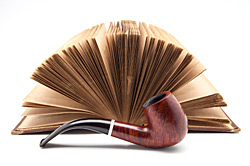 Sometimes, it’s easy to forget that pipe smokers were around even before the interwebs, and our modern technology-driven ability to communicate with one another effortlessly. There was a time when we congregated in tobacconists’ shops, pubs, bars, and other public venues, but so much of that is gone, now, and our numbers are more sparse. When was the last time you were walking down the street and noticed another pipester, contentedly puffing away on a cherished briar? Even twenty years ago, it was a much more common sight that it is today, yet, by all indications, our numbers are on the rise, once again. Fortunately, we now have other ways of joining together, and sharing with each other our enthusiasm, and the rich history and tradition of the pipe. It’s not the same as it once was, but it’s still a great time to be a pipe smoker.
Sometimes, it’s easy to forget that pipe smokers were around even before the interwebs, and our modern technology-driven ability to communicate with one another effortlessly. There was a time when we congregated in tobacconists’ shops, pubs, bars, and other public venues, but so much of that is gone, now, and our numbers are more sparse. When was the last time you were walking down the street and noticed another pipester, contentedly puffing away on a cherished briar? Even twenty years ago, it was a much more common sight that it is today, yet, by all indications, our numbers are on the rise, once again. Fortunately, we now have other ways of joining together, and sharing with each other our enthusiasm, and the rich history and tradition of the pipe. It’s not the same as it once was, but it’s still a great time to be a pipe smoker.
One thing our net-powered connectivity has offered is an interesting sense of multiculturalism. As pipesters, we share a common experience with others all over the world, virtually inhabiting each other’s cultural milieu for a time, increasing our understanding of each other, and broadening the dimensions of our own world views. The common themes of pipe and tobacco, fueled by our individual familiarity with diverse flavors and aromas, offer a unique form of conviviality, and a platform through which we can share other aspects of our lives, our ideas, our thoughts. We tell our stories, and they become threads in a brightly colored tapestry of a collective history that extends back hundreds of years. In a world that’s increasingly flattened by today’s fast-paced, breathless, ocular-centric sensibilities and the piratization of cultures, the sensory landscape of the pipe and all it offers gives us an opportunity to link to our past, to take time to breathe a little, and to add more depth to our world.
As we dive into this month’s mailbag, let’s all take a moment to celebrate each other and our pastime, to raise our pipe together in fellowship, and feel a little sorry for those whose will never know what we know.
Yak asks: I posted this on another forum a while ago, hoping you’d check in answer it. Since not, it might be an interesting topic for you to address in one of your columns. How is it that tobacco can lay around in warehouses for decades, even, before it is “manufactured” without losing anything essential, but the minute a tin of it is opened, it starts losing essential oils and other good qualities?
A: Great question. Dry tobaccos stored in bales are relatively stable. From the time they’re harvested until they’re blended, they undergo several moist/dry cycles. If stored relatively dry, they really don’t change much, though some leaf will tend to “mellow” a bit. It’s when they’re conditioned, meaning that they’re brought up to moisture for pressing, cutting, and so on, and then blended with other tobaccos and sealed in tins that things begin to be more interesting.
Once the tobacco is moistened, certain components in the leaf are “unlocked,” sugars become available, and chemical and biological processes responsible for aging can begin in a sort of elaborate dance. Blended leaf will begin to share its volatile components with its neighbors, and the result, especially if tinned, will take on new life. During aging, even over a relatively short time, a great many things happen within that little hermetically sealed biome to produce new compounds from existing ones through fermentation and other complex reactions. We know the result when we open the tin and smell all those wonderful aromas that weren’t there when the tobacco was young.
As soon as that seal is broken, things begin to change again, in different ways. The more volatile components can gas out, and with the introduction of fresh air, the door is opened for additional oxidation to take place. In some cases, that first bowl from a freshly opened, well-aged tin will be the best it will ever be, though perhaps only slightly so. In others, the tobacco will improve with a little breathing time, much like a fine wine when the cork is pulled. Unlike wine, however, the tobacco won’t “turn to vinegar” over time, but it’s still best to store aged blends, once opened, in sealed containers, like glass canning jars, to preserve as much of those wonderful aromas as possible.
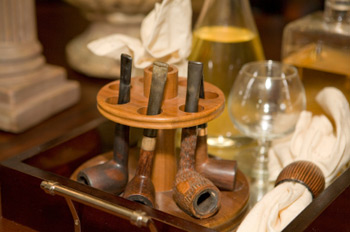 Steve asks: Is all vulcanite created equal? Not long ago, you told me about the ’50’s Comoy second I bought with the dual air passages in the stem- how that stem is quite possibly not original. It seems to be a harder and shinier brand of vulcanite. I prefer Lucite stems for the usual reasons given, but while I’m not a stem chewer, I have been a bit of a firm clamper at times- leaving crimps in some of my vulcanite stems. Is some vulcanite softer than others, and if so, what is the story?
Steve asks: Is all vulcanite created equal? Not long ago, you told me about the ’50’s Comoy second I bought with the dual air passages in the stem- how that stem is quite possibly not original. It seems to be a harder and shinier brand of vulcanite. I prefer Lucite stems for the usual reasons given, but while I’m not a stem chewer, I have been a bit of a firm clamper at times- leaving crimps in some of my vulcanite stems. Is some vulcanite softer than others, and if so, what is the story?
A: The story is a little complicated, and could probably take up a whole column on its own, but briefly, there is indeed more than one formulation of vulcanite, and each has its own characteristics. Some vulcanite is softer, some harder. Some seems to turn green faster than grass grows, and some remains black and shiny for a very long time.
Most of today’s high-grade pipe makers seem to be using what’s often referred to as “German vulcanite,” chosen for its high quality, lack of inclusions and flaws, resistance to oxidation, and good overall workability. My experience with these stems is that they are resilient to moderate abuse, take and retain a good shine, don’t olive quickly, and are relatively easily brought back to black when they do. I think one of the reasons we place such a high value on hand-cut stems is that a pipe maker is unlikely to spend all that time and effort making a stem out of poor material, so there’s a certain level of implied confidence in the product. On the other hand, one classic, well-known English pipe maker hand-cut mouthpieces from a material I’ve been known to call “InstaGreen,” so even knowing that a stem is hand-cut is no absolute guarantee that it’s made from the best materials. Further clouding the picture, there are molded stems made from very good materials that will be all but indistinguishable from a quality hand-cut stem once carefully re-shaped and fitted.
The best assurance of a quality mouthpiece is to buy from reputable makers who stake their reputation on the quality of their materials, as well as their workmanship.
Bill asks about casing, though he may not realize it: Some straight virginia tobaccos seem to taste great at the beginning of the bowl, but when I get past the half-way point, they take on a flavor I can only describe as “chemical,” sort of a metallic, artificially sweet taste. Others, notably your Union Square, remain true to the end. What’s going on?
A: Without knowing what tobaccos you’re talking about, I can only speculate, but I think what you’re experiencing is the condensation of the casing sauces. As the tobacco is smoked, soluble components, such as added sugars, humectants, flavorings, will tend to build up in the tobacco at the bottom of the bowl, which during the first part of the smoke is acting as a de facto filter. The smoke stream flows through it, and because of the cooler temperatures in the unburned leaf at the bottom of the pipe, these volatilized elements will condense and concentrate in that leaf. As you get farther along, these will burn off, along with the tobacco, resulting in an increased involvement of those components in the smoke that emerges from the stem. Not all of those combustion byproducts are necessarily pleasant, which is why some heavily cased aromatic tobaccos turn sour or bitter towards the end of the bowl.
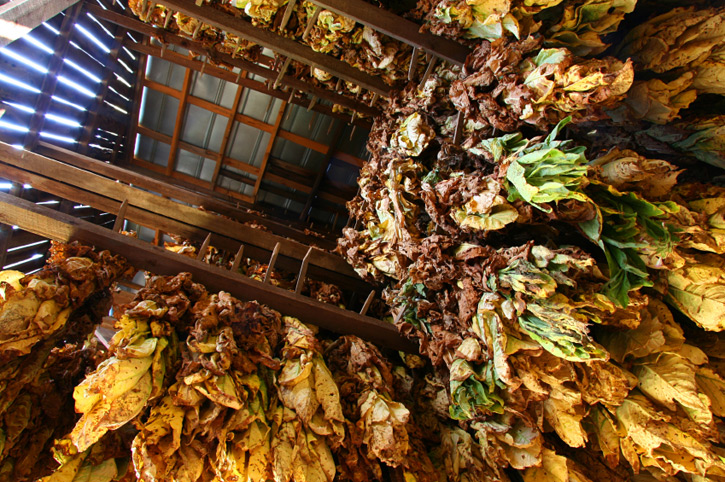
Of course, something similar happens to the naturally occurring ingredients in the pure leaf, which is one reason tobaccos tend to intensify in taste as the bowl is smoked. All of this relates to the reason some smokers don’t like the bottom of the bowl experience. (See last month’s Ask G.L. Pease for a little more on this phenomenon.)
From Cole: No question just a compliment. Your Barbary Coast is amazing. I never thought I would like burley in anything. I guess it just needed the right blend.
A: Thanks for the kind words. There actually is an interesting question in there, though. Burley, by itself, has almost zero sugar in the leaf once it’s been cured. The long air-curing process allows the cells of the leaf to continue to metabolize whatever small quantities of sugars are present in the leaf at the time of harvest. The resulting tobacco, smoked raw, can be acrid and harsh, but it also offers body and a distinct mouth-feel. The addition of sugars, either through the blending of high-sugar virginias or the use of casing sauces, does much to smooth out those sharp notes by decreasing the alkalinity of the smoke stream, but it’s something of a delicate balancing act. Too much added sugar can present other problems, especially if it’s in the form of casings (see above). The formula for Barbary Coast employs several methods to achieve the goal of a good tasting, smooth smoking burley blend. The burley itself is lightly sweetened at the outset, and use of some high-sugar virginias makes a further difference, as does the addition of that wee bit-o-brandy. Finally, the magic of perique knits things all together to polish off the edges and add more layers of that wonderful complexity. So, yes, it’s burley, but a whole lot more that makes the finished product what it is.
Your turn
– glp
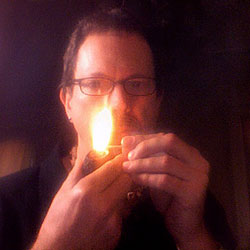 Since 1999, Gregory L. Pease has been the principal alchemist behind the blends of G.L. Pease Artisanal Tobaccos. He’s been a passionate pipeman since his university days, having cut his pipe teeth at the now extinct Drucquer & Sons Tobacconist in Berkeley, California. Greg is also author of The Briar & Leaf Chronicles, a photographer, recovering computer scientist, sometimes chef, and creator of The Epicure’s Asylum. See our interview with G. L. Pease here. |



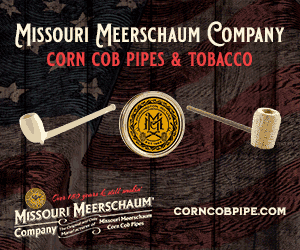


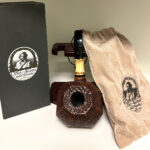

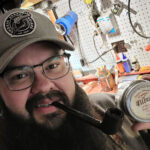





I truly enjoy reading your insights into tobacco and pipes. Thanks for helping me amaze my friends with tobacco trivia! Keep it coming!
I never fail to learn something from each of your thoughtful columns. Many thanks; they are greatly appreciated.
Very good article.
Many thanks.
“…let’s all take a moment to celebrate each other and our pastime, to raise our pipe together in fellowship, and feel a little sorry for those whose will never know what we know.”
Well said, thank you for your efforts in educating those of us who “know” to know a bit more…
I have enjoyed a pleasant discovery. I will be returning for more. Thank you.